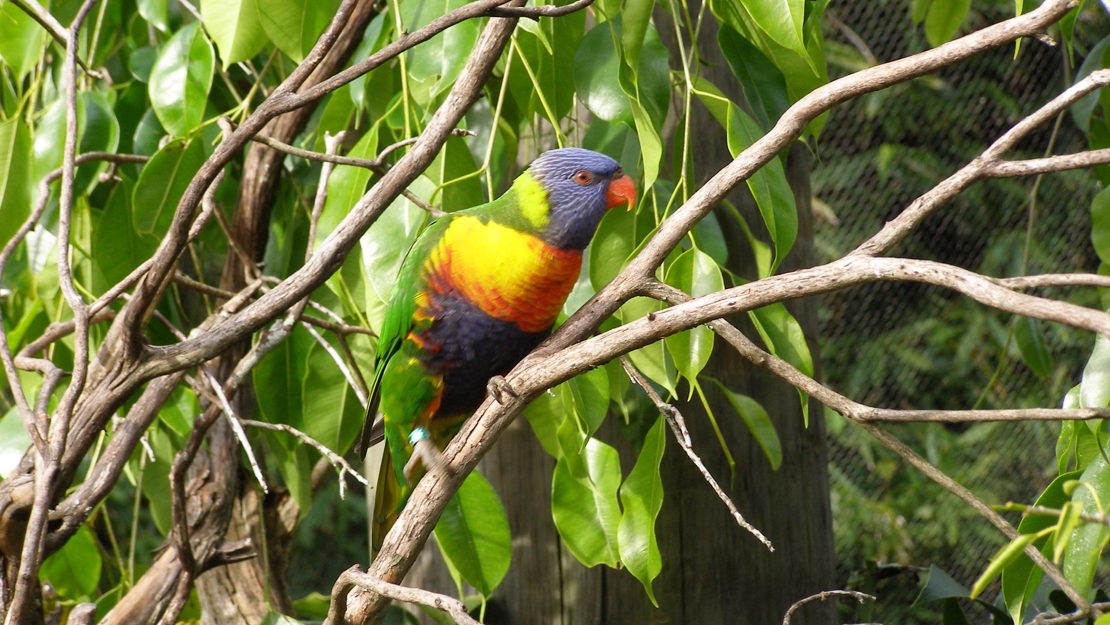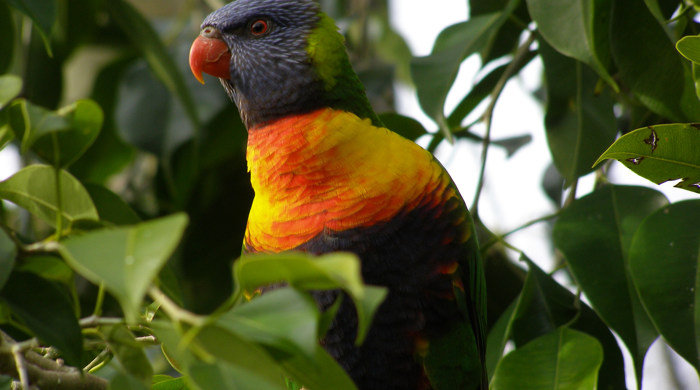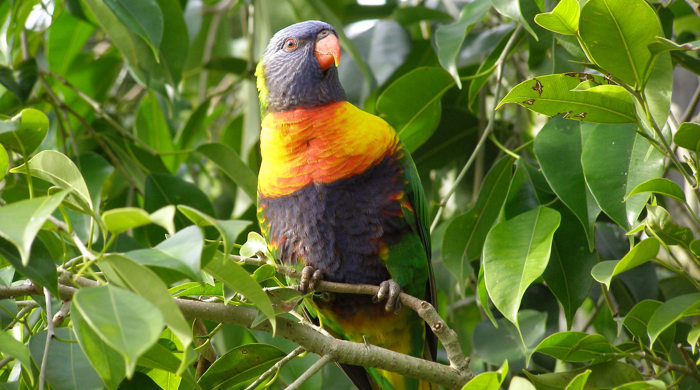Trichoglossus haemotodus and all hybrids
Rainbow lorikeet
Family: Psittaculidae
Origin: Australia

Regional Pest Management Plan (RPMP) status
- Aotea — Exclusion
- Whole region — Sustained control
- Hauraki Gulf Controlled Area Notice pest
General description
Brightly coloured, long tailed parrot with blue head, red beak, orange-yellow breast and green wings, back and tail. Weighs between 75-157 grams.
What you need to know
To help protect our environment:
- you must not release any rainbow lorikeet from containment within the Auckland region
- you must not move any rainbow lorikeet to Aotea/Great Barrier Island group
- you must not breed, distribute or release any rainbow lorikeet on Aotea/Great Barrier Island group
- you will not be allowed to breed, distribute or sell any rainbow lorikeet within the Auckland region from 1 September 2022.
- You are however still allowed to retain any existing individuals you already own. You can also take these animals to the vet, they can move with you if you move house, and you can take them to stay with someone else while you’re on holiday. You just need to keep them securely contained so they can’t escape into the wild.
- If you pet-sit / provide temporary accommodation for other people’s animals, you’re also covered for receiving them, as long as you keep them securely contained while they are staying with you. However, if you receive animals on a more permanent basis, such as rescue centres, where ownership is changing hands, then you need to apply for an exemption for this activity. You can apply for free using this application form.
Habitats
Forest edges, urban areas, gardens, orchards.
Impact on environment
Aggressively competes with native nectar-feeding birds, potential reservoirs for parrot diseases.
Control
Management
If you have pet lorikeets, make sure they’re securely contained to avoid accidental escapes. If you are no longer able to look after your pet rainbow lorikeet, find someone who is prepared to give it a lifetime home, or contact a relevant pet shop or animal rescue organisation to get it rehomed.
Never release a rainbow lorikeet into the wild – your pet may be unable to find the food and shelter it needs, and it also puts our native species at risk.
If you see a rainbow lorikeet in the wild, please report it to Auckland Council at pestfree@aucklandcouncil.govt.nz.





